Papers by György dr. Szabados

Sculptural reconstruction of King Béla’s III and Queen Anna’s faces
Abstract
In December 1848, ... more Sculptural reconstruction of King Béla’s III and Queen Anna’s faces
Abstract
In December 1848, among the ruins of the south nave of the Royal Basilica in Székesfehérvár, an undisturbed burial site of a royal couple was found, together with three more burial sites. Two contemporary scholars, János Pauer historian and János Érdy archeologist identified the two royal burial sites as the tomb of King Béla III of Hungary (1172–1196) and his first wife, Agnes de Châtillon also known as Queen Anna of Antioch (†1184/85). The identification of the royal couple is valid in our time, too, as it has been strengthened by the result of older and newer sciences, as well, from the aspects of genealogy, art history, archaeology, medical science, archaeogenetics.
In our paper we present the latest 3D facial reconstructions of King Béla III and his first wife Queen Anna and the background of re-creation of their face and the whole reconstruction method. After a summary of the archaeological and historical data available for the present work, we give an outline on the basics and the brief history of facial approximation or reconstruction. Then we discuss the sculptural reconstructions of the faces made by Károly Árpás and Gyula Skultéty in 1972 as well as 1986 and based on the data available the process of their work.
The process of newest reconstructions by Emese Gábor is described in detail starting with the graphical sketch and ending with the sculptures, emphasizing the new aspects and solutions compared to the methods known till now. The most important difference between the first two works and the present, third work is the following: in 2014 CT-imaging were made in the Department of Radiological Diagnostics of the National Institute of Oncology (Budapest, Hungary). Thus, this CT-documentation on the skulls of the royal couple helped Emese Gábor to make more precise facial reconstructions, than her two honourable predecessors.
Facial reconstruction is a living, evolving science, as well as an artistic creative process. Its rapid development and expansion are predictable. However, as far as we know today, it is safe to say that without further data, no significant changes to rulers’ facial features can be expected based on the remaining skulls. The quality of the facial reconstructions we have presented is due not only to their artistic outworking but also to the scientific data available only recently, especially the computed tomography images of the skulls.
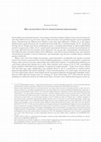
On the coronation of King Stephen the Saint in Székesfehérvár – once again (Summary)
The early H... more On the coronation of King Stephen the Saint in Székesfehérvár – once again (Summary)
The early Hungarian narrative sources (legends, gestas, chronicles) tell no information regarding the site of King Stephen’s coronation. The eldest information was recorded only in 1497. A Franciscan friar Osvát Laskai asserted that Stephen was crowned at Székesfehérvár. In 2019 my paper strengthened this data considering the indirect facts and circumstances taken from earlier narrative sources. Nevertheless, recent scholarship has looked to establish Esztergom as the site of Stephan’s coronation: a paper was published in 2020 asserting that some phrases in the legends of King Stephen the Saint arguing against the possibility of the first Hungarian royal coronation was celebrated in Székesfehérvár and especially in the Royal Basilica dedicated to Virgin Mary. My recent paper analyses this critical point of views and resulted that even these legends – written in the last decades of the 11th century – strengthen the possibility of the first Hungarian royal coronation in Székesfehérvár and especially in the Royal Basilica, too. According to all the earlier source-data and aspects Osvát Laskai recorded a real tradition, and my result has been confirmed. Therefore, it can be stated once again that late in the year 1000 Stephan was crowned at the Royal Basilica at Székesfehérvár, which consequently places the years of construction between 997 and 1000.
Minden jog fenntartva. Bármilyen másolás, sokszorosítás, elektronikus közzététel, illetve adatfel... more Minden jog fenntartva. Bármilyen másolás, sokszorosítás, elektronikus közzététel, illetve adatfeldolgozó rendszerben való tárolás csak a kiadó előzetes írásbeli hozzájárulásával megengedett. Felelős kiadó \\\\ L. Simon László, a Magyar Nemzeti Múzeum főigazgatója Készült a Gyomai Kner Nyomda Zrt.-ben 2022-ben. Felelős vezető Csöndes Zoltán vezérigazgató mnm.hu mnm.hu/hu/kiadvanyok ISBN 978
Álmos nemzetsége, vagyis a IX. század közepétől 1301-ig monarchikus főhatalmat birtokló dinasztia... more Álmos nemzetsége, vagyis a IX. század közepétől 1301-ig monarchikus főhatalmat birtokló dinasztia fontos szerepet játszott a középkori Európában: sok rátermett uralkodót és feltűnően sok szentet adott a történelemnek. Hagyatékának máig élő elemei úgyszintén meghatározóak számunkra. Ez a dinasztia – újkori szakkifejezéssel élve Árpád-ház – szervezte állami keretek közé a magyarságot, alapozta meg közép-európai honosságát, s tőle származnak a későbbi nemzeti önazonosságának legfontosabb jelképi kifejezőelemei.
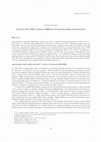
The stately humpbacked king.
On the identification of a royal graves found in 1848 – once again
... more The stately humpbacked king.
On the identification of a royal graves found in 1848 – once again
During the excavation of 1848 five burial places were found amongst the ruins of the Royal Basilica in Székesfehérvár. Two of the skeletons had been defined as a royal pair. Soon after János Pauer and János Érdy identified them with King Béla III the Great (1172–1196) and his first wife Queen Anna. Their identification became accepted generally by the scholars until Endre Tóth published a counter-advice. According to his archaeological aspects the two skeletons were the mortal remains of King Kálmán the Learned (1095–1116) and his first wife Queen Eleutheria/Felicia. A paper of mine supported the elder identification in 2016. On the one hand the argumentation of Tóth was limited to some uncertain archaeological dating. On the other hand, the various disciplines prove all that this royal pair was King Béla III and Queen Anna. 1.) The man’s skeleton was remarkably tall, and Richard of London emphasized the tallness of the Hungarian king whom he met in 1189. 2.) The Nordic features of the king’s body were resulted from the kinship with the dynasty of the Kievan Rus which had Viking origin, but it was true only for Béla’s ancestors. 3.) The head-shrine’s portrait of King László I the Saint (1077–1095) is similar with the face-reconstruction of the skull: as László I was canonized in 1192, thus Béla III could be the model for the shrine. 4.) The woman’s skeleton has signs of many pregnancies: Anna bore 7, but Eleutheria/Felicia had only 3 children. 5.) Kálmán had serious inflammation of ear which hurts the skull, but the royal skull shows no symptom of this illness. 6.) Kálmán ordered by his own law that Christians must be entombed in cemetery, but the skeletons were excavated from inside the ruins of the Royal Basilica in Székesfehérvár.
Nevertheless in 2019 a book was published by Gergely Buzás and Olivér Kovács and their identification is similar with Tóth’s theory. Unfortunately, their arguments are based on false logic, ignoring and misinterpretation of certain scientific facts considering the archaeology, history, anthropology, and medical science as well. My paper makes the detailed criticism of their reasoning. Furthermore, the recent results of archaeogenetic research strengthen the correctness of the original identification published by János Pauer and János Érdy, complete this identification with naming the other skeletal remains. During the excavation in 1848 there was found a small group of 5 graves with 6 skeletons: 1.) a King with his crown, 2.) a Queen with her crown, 3.) a male skeleton of an elder burial on the King’s right side, 4.) a skeleton of a pregnant lady with her unborn child (in the 7th or 8th month of her pregnancy), 5.) a very fragmented skeleton. A study was published first in 2018 by Judit Olasz and her contributors and soon after a book was edited in 2019 by Miklós Kásler and Zoltán Szentirmay on the identification of these royal skeletons, applying historical, archaeological, anthropological, radiological, morphological, radiocarbon dating and genetic methods. Although some of the skeletons are lost, but the scholars could reconstruct the burials of the afore-mentioned small group. 1.) King Béla III (†1196), 2.) his wife Queen Anna (†1184/85), 3.) on the right side of King Béla III. laid his paternal grandfather King Béla II the Blind (†1141 – his skull was lost in the second half of the 19th century), 4.) by the feet of the royal pair laid Princess Predslawa of Kiev (†ca. 1110) mother of King Béla II with her unborn daughter (the skeleton of the lady was lost, but the remains of the female foetus are available), 5.) the very fragmented skeleton was lost, too, but it can be identified with Duke Álmos, father of King Béla II (†1127 in exile in Byzantium and his body was exhumed in 1137 and re-buried in Székesfehérvár). These dynastical relations can be reconstructed in an only viable way if we accept the fact that from the grave of King Béla III was excavated King Béla III himself.

Hoppál Bulcsú – Szabados György szerk.: Mítosz és történelem II. Tanulmányok Hoppál Mihály 80. születésnapjára. Budapest, 107–128. (Mítosz és Történelem Könyvek 3.), 2022
Amikor annak eredünk nyomába, hogy a kora középkorban miként neveztek – vagyis miként azonosított... more Amikor annak eredünk nyomába, hogy a kora középkorban miként neveztek – vagyis miként azonosítottak – egy közösséget, több buktató leselkedik ránk. Egyfelől az, hogy egy közösség többféleképpen is szerveződhet, s a különböző identitásformák (pl. egy nemzetséghez, egy államhoz, vagy egy néphez való tartozás) gyakran összetéveszthetők. Másfelől az, hogy egy név – vagyis egy jelölő – története, valamint az általa jelölt jelenség története sokszor külön utakon jár: egy név több népet is jelölhet, s egy népet több névvel is jelölnek.
Áttekintésem a „Magyar” tulajdonnév korai jelentéseit veszi sorra. Köztudomásúlag a magyar egy belső, anyanyelvi jelölője annak a népnek, amelyik a IX. század elejétől önálló történelmi tényezőként különíthető el. Ám ez a tulajdonnév jóval korábban bukkant fel, méghozzá nem csoportjelölői funkcióban: egy 530 körül élt kutrigur-hun király nevét „Muageris” formában jegyezték le bizánci történetírók, s több XIX–XX. századi tudósunk elfogadta a „Muageris” (Muagyerisz) személynév és a „magyar” népnév közötti összefüggést. Egy 950 körül összeállított bizánci államkormányzati kézikönyvben „Meger geneája” kap említést a „Turk” [magyar] vezéri nemzetségek között. Néhány évszázaddal később a hazai geszták és krónikák „Hetumoger”, „het Mogor” jelzős szerkezettel utalnak a hét magyar vezéri nemzetség fejére, „Dentumoger” néven viszont egy földrajzi fogalom, a honfoglalás előtti magyar szállásterület említtetik egy helyütt. Tekintettel arra, hogy több más esetben is (legismertebb Oszmán esete) előfordult, hogy egy személyről előbb egy nemzetséget, majd egy egész népet neveznek el, a „Magyar” változatot steppei analógia is gyámolítja. Ennél még fontosabb, hogy „Muageris” király neve jól illeszkedik a többi írott emlék alkotta vázba.
Összességében véve a „magyar/Magyar” név négy koherens funkcióban tűnik elénk a kora középkori történelemből.
1) Személynév: „Muageris” kutrigur-hun király a Fekete-tenger vidékén, a csodaszarvas mondájának testvérpárjából „Magor” ugyanott.
2) Helynév: az őshaza egésze („Dentumoger”, „Magor”), avagy része („Magaria/Magoria”).
3) Vezéri nemzetség neve: „Meger”.
4) Népnév: „Hetumoger”, „het Mogor”.

Gróf Péter – Hoppál Mihály – Szabados György szerk.: „Elődeim kezét fogom, az ő munkájukat folytatom” Emlékkötet László Gyula halálának 20. évfordulójára. 123–139. (Mítosz és Történelem Könyvek 2.), 2021
„A múlt kutatója állandóan a »termékeny bizonytalanság« légkörében dolgozik.” Ezt a szakmai hitva... more „A múlt kutatója állandóan a »termékeny bizonytalanság« légkörében dolgozik.” Ezt a szakmai hitvallást László Gyula fogalmazta meg, és – nem véletlenül – éppen a legtöbb vitát kiváltó őstörténeti elgondolásának, a „kettős honfoglalás” elméletének szentelt könyvében is olvasni lehet.
A több hullámban történt magyar bejövetel gondolata az első Árpád-kori krónikák és geszták óta helyet kapott történetírásunkban. Ezt az elméletet újabban László Gyula fémjelzi, aki a „kettős honfoglalás” kifejezést alkalmazta rá. Ennek lényege, hogy a magyarság egyes csoportjai jóval a honfoglalás előtt bebocsáttatást nyertek az Avar Kaganátusba, ezért Álmos és Árpád népe nagy tömegű magyarságot talált a Kárpát-medencében. Őket a legvalószínűbb eshetőség szerint a 670-es években bevándorló „griffes-indás” kultúrájú kései avarok, vagyis „onogur-magyarok”, „elő-magyarok” leszármazottainak tartotta, de hangsúlyozta, hogy más megoldás is elképzelhető. Az elmélet kidolgozása során a neves régészprofesszor régészeti, történeti, embertani és nyelvi kútfőket egyaránt csatasorba állít.
László Gyula több évtizedes tudósi fejlődése során érlelte elgondolását. A honfoglaló magyar nép élete bemutatásának szentelt könyvében (1944) az avar tömegek fennmaradása és a magyar uralom alá jutása mellett foglalt állást, hangsúlyozván, hogy az el nem szlávosodott avarság zöme hun származású volt, és e néven jutott emlékezete a középkori magyar krónikák lapjaira, és ez magyarázza, hogy az avar név miért nem szerepel középkori történetírásunkban. Rátérve a „kettős honfoglalás” elméletére: László Gyula „régészeti és történeti töprengések” közepette adott hangot ama meglátásának, amely szerint írott és tárgyi kútfők egyaránt arról tanúskodnak, hogy a Kárpát-medencébe Attila hun király halála (453) után több hullámban érkeztek steppei kultúrájú embertömegek. Mivel a régészeti érvek mérlegelése eleve kívül esik szakmai illetékességem körén, ezért csupán a történeti és a nyelvtörténeti vonatkozásokra összpontosíthatok.
Az írott történeti kútfőkből kiderül, hogy az Avar Kaganátus területére több hullámban is érkeztek be steppei rokon népek: 595 táján szabirok és kutrigurok, 670 körül onogurok. Ugyanezen forráscsoport ad számot arról, hogy az Avar Kaganátus összeomlása (822 k.) után lakossága nem pusztult ki, hanem a magyar honfoglalást megérve a Magyar Nagyfejedelemség, majd Magyar Királyság köznépévé, a magyar etnogenezis Kárpát-medencei fejezetének részesévé vált.
Noha nincsenek nyelvi adataink arra, hogy az avar állam melyik steppei eredetű komponensében lehetne „elő-magyar” népi és nyelvi közösséget felfedezni, de a „kettős honfoglalás” elméletének történeti forrásalapja megvan, sőt általa egy logikusabb rekonstrukciót adhatunk a Kárpát-medence késő-népvándorláskori múltjáról.

Hoppál Mihály – Szabados György szerk.: Mítosz és történelem. Második kiadás (Mítosz és Történelem Könyvek 1.), 2021
Régi, mégis örökifjú kutatói feladat mítosz és történelem kapcsolatával foglalkozni. Ám a félreér... more Régi, mégis örökifjú kutatói feladat mítosz és történelem kapcsolatával foglalkozni. Ám a félreértések elkerülése végett elsőként a fogalomhasználatot kell világossá tenni, hogy ki mit ért mítoszon és történelmen, valamint e két jelenség összefüggésein. Alább egy szerény tallózással tekintem át a számomra leginkább meggyőző megközelítéseket.
A történelem fogalmával talán nincs gond, hiszen ennek hallatán a múltbeli dolgokra gondolunk, illetve arra, ami ezekből megismerhető. A mítosz fogalmának jelentése viszont rétegzettebb. A mítosz praktikusan szólva olyan szöveg, ami elhelyezi az embert a világban, identitást ad neki: egy megalapozó történetté sűrített múlt. De mind a mítosz, mind a történelem olyan szimbolikus forma, ami összeköti a múltat a jelennel: a múlt egy-egy fajta mentális modellje, a kultúra hosszú távú emlékezete.
A magyar – egyedülálló módon – az a máig fennmaradt közösség, amelynek nemcsak első államhatalmi megszerveződése, hanem etnogenezise is a steppei kultúrkörben zajlott le; ezzel a keleti örökséggel integrálódott a középkori Nyugat-Európa szellemi-politikai világába, s fejezte ki azon belül, annak szabályai szerint műveltségének hagyatékát. Az írásba foglalást természetesen megelőzte a szájhagyományban élő mondakincs keletkezése, ám azokból csak azokat ismerhetjük, amelyek felvétettek régi gesztáinkba és krónikáinkba.
Ismeretes, hogy az első ezredfordulón végrehajtott hivatalos kultúraváltás következtében idegen nyelvi (latin) és vallási (keresztény) írástudói közeg várta az ősmúlt emlékét, ilyenformán egy idegen szellemi szűrő is döntött arról, melyek legyenek a pogány előidők lejegyzésre méltó elemei. Ám ezt ellenkező irányból szemlélve derűlátók lehetünk, mert voltak olyan erős hagyományelemek, amelyek át tudtak hatolni ezen a szűrőn, ekképp biztosították túlélésüket a pergamenlapokon. Bizakodásra ad okot még az is, hogy az újabb kutatás szerint a történeti narratív emlékezet mintegy hét nemzedéket fog át, ami akár két-három évszázadot, sőt ennél is hosszabb időt jelenthet. Ebből adódóan az eredethagyományok tekintetében régi gesztáink, krónikáink forrásértéke nagyobb, mint azt a némelykor túl szigorú filológiai kritika vélte.
Az őstörténeti vonatkozású magyar mítoszok között végzett szerény tallózás a mítoszokat eredetiségük, identitásalapozó szerepük mentén veszi sorra.
Az eredethagyományok közül elsőként a magyar nép eredetmítosza említendő, a csodaszarvas-monda. A magyar állam eredetmítosza a turul-monda, Álmos nagyra hivatottságának elbeszélése. E két monda nem áll ellentétben a magyarok hun hagyományával és mindkettő hiteles, eredeti mitikus szöveg. A mítosz identitásalapozó erejénél fogva megőrzendő szellemi kincs, a reális történeti tudatot nem mítosztalanítani kell, hanem álmítosztalanítani, vagyis kiszűrni azokat az identitáshamisító elemeket, mint például Árpád és idősebb fiainak képzelt halálát a 907-es pozsonyi csatában, amelyek nem eredeti mítoszok, hanem dilettáns városi legendák.
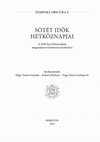
The lifeways of the ninth–twelfth-century Hungarians
What can and cann ot be gleaned from the wri... more The lifeways of the ninth–twelfth-century Hungarians
What can and cann ot be gleaned from the written sources
Two profound changes occurred in the period spanning the ninth to twelfth centuries of early Hungarian history: the first, the migration to a new homeland in the later ninth century, when the people of the Hungarian Great Principality settled in Central Europe, a region more closed than the steppe; the second, the cultural transformation at the dawn of the new millennium in the wake of the foundation of the Hungarian state involving the change in customs enforced by the state. Based on the meagre information contained in the written sources, I have reviewed what can and what cannot be gleaned from the Hungarian and the external sources. I focused on three periods: the “nomadism” of the ninth–tenth-century Hungarians, the mobility of the eleventh century commoners, and the perception of the mid-twelfth-century Hungarian Kingdom from two different perspectives. My general conclusion is that the written sources offer little in the way of information for reconstructing ninth- to twelfth-century lifeways. The main difficulties can be summarised as follows: firstly, there are no contemporaneous internal sources on the ninth–eleventh-century Hungarians. The period’s Hungarians are solely discussed and described in works whose authors had an entirely different cultural background (Byzantine emperors, Arab geographers), had never set foot in the Hungarian lands – neither in Etelköz, nor in the Carpathian Basin – and their information was second- or third-hand at best and rarely reflected an intimate knowledge of their subject (Ibn Hayyan, Guibert of Nogent). The Hungarian written sources are fairly late and owing to their scarce number, they do not provide insights into regional traits. The earliest writers who recorded their personal experiences lived in the twelfth century: the German bishop Otto of Freising passed through the country in 1147, while the Andalusian Arab traveller Abu Hamid al-Gharnati lived in Hungary between 1150 and 1153. Their accounts are also coloured by their cultural otherness. Nevertheless, their accounts, if treated with the necessary critique, add interesting cultural details to the broad picture painted by archaeologists, who are alone able to refine that picture on the regional and micro-regional level.
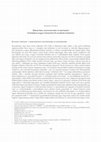
On Origin, Tradition and Critique
An Overview of the Main Threads of Medieval Hungarian Historiog... more On Origin, Tradition and Critique
An Overview of the Main Threads of Medieval Hungarian Historiography
(Abstract)
Hungarians are the only nation to have emerged from the cultural community of the Eurasian Steppe and became one of the kingdoms of Western Christian Europe. During this transition the governmental system changed from a steppe empire to a Christian kingdom which began with the coronation of King Stephan I the Saint in the year 1000. With the adoption of Latin by the clergy as the official language of literacy, this period also heralded the beginning of Hungarian historiography. Although the surviving Hungarian gestas and chronicles date to the 13th century onward, their philological characteristics prove that they drew on a much older text: the Ancient Gesta written during the reign of King Andrew I (1046–1060) with additions from later continuators in the 11th and 12th centuries. The aim of this paper is to frame the evolution of Hungarian historiography from its naissance to the last medieval chronicle compiled and edited by John Thuróczy in 1488. During this period historical remembrance was controlled by the royal dynasties and the clerical authors who at times treated some oral traditions with incredulity and criticism.
The reconstruction of early Hungarian historiography is complicated by several factors. The most important factor is that most of the early gestas and chronicles are now lost and only traces of them are preserved in later texts. Thus, attempts to reconstruct these early chronicles rely on 13th–14th century texts. Since the earliest of these, Simon of Kéza’s Gesta Hungarorum (ca. 1282–1285), survives only in excerpts, we must instead look to 14th century chronicles for a more complete picture of our early historiographic tradition. For this, we turn to two groups of texts. The first is the ancestor of the Buda Chronicle, which was completed before 1342 and the other is the Hungarian Illuminated Chronicle, the basic text which was written in 1358 by its author, most likely Mark of Kált. This Mark of Kált was a clergyman of the royal chapel, before becoming a canon warden to the provost church of the Royal Coronation Basilica dedicated to the Virgin Mary in Székesfehérvár, where due to his position he had access to written records kept in the royal archives in the cathedral. Though in the absence of codices we cannot be sure that the surviving gestas and chronicles represent the dominant historiographic directions of the times, there are several signs that point in this direction. Most importantly, the authors of these gestas and chronicles did not simply continue writing history, but even challenged and debated the works of their predecessors, sometimes reinterpreting the earlier texts. Furthermore, I aim to point out that the Angevin-era codex writers, considered it is important to retain the structure of the Hun-Magyar ancient history which can be read in the gesta of Simon of Kéza, at the same time keeping semantic and gesta-specific characteristics intact, only making minor tweaks to a few elements. From the viewpoint of the process of historiography, in certain manuscripts there are signs of value worthy of notice. The following should be considered representative: the codex of the Hungarian Illuminated Chronicle from the time of Louis I (1342–1382), and two books from the time of Matthias Hunyadi I (1458–1490): the concise Buda Chronicle (1473), the first printed book to be printed in Hungary, and John Thuróczy’s Chronica Hungarorum, of the late 15th century (1488 printed in Brünn and Augsburg), which is a summary of medieval Hungarian chronicle literature intended for a broader audience. I believe that it is logical to conclude from these official Hungarian histories that the main thread of historiography was dictated by state interest.
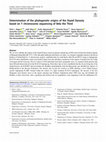
We set out to identify the origins of the Árpád Dynasty based on genome sequencing of DNA derived... more We set out to identify the origins of the Árpád Dynasty based on genome sequencing of DNA derived from the skeletal remains of Hungarian King Béla III (1172-1196) and eight additional individuals (six males, two females) originally interred at the Royal Basilica of Székesfehérvár. Y-chromosome analysis established that two individuals, Béla III and HU52 assign to haplogroups R-Z2125 whose distribution centres near South Central Asia with subsidiary expansions in the regions of modern Iran, the Volga Ural region and the Caucasus. Out of a cohort of 4340 individuals from these geographic areas, we acquired whole-genome data from 208 individuals derived for the R-Z2123 haplogroup. From these data we have established that the closest living kin of the Árpád Dynasty are R-SUR51 derived modern day Bashkirs predominantly from the Burzyansky and Abzelilovsky districts of Bashkortostan in the Russian Federation. Our analysis also reveals the existence of SNPs defining a novel Árpád Dynasty specific haplogroup R-ARP. Framed within the context of a high resolution R-Z2123 phylogeny, the ancestry of the first Hungarian royal dynasty traces to the region centering near Northern Afghanistan about 4500 years ago and identifies the Bashkirs as their closest kin, with a separation date between the two populations at the beginning of the first millennium CE.
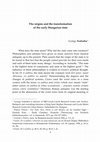
The first Great Princeps Álmos organized the monarchic state in the north region of the Black Sea... more The first Great Princeps Álmos organized the monarchic state in the north region of the Black Sea c. 850. His political formation contained the population of a territorial unit governed by a souvereign power (with permanent institutions, centralization of supreme authority the ruling system had ideological basis, specialization of governmental roles with an official hierarchy), and as it had been established in the cultural community of the Eurasian steppe without using the post-Roman political tradition, it must be regarded as steppe-empire or steppe-state.
Álmos and his son Árpád conquered the Carpathian Basin, thus the Hungarian Great Principality represented the type of the Eurasian steppe empires in Central Europe from c. 862 until 1000. Then this early Hungarian state had been re-organized as a Christian Kingdom by Saint Stephen I, who was the 5th descendant of Álmos. Saint Stephen I as the last Great Prince (997–1000) and first King (1000–1038) of Hungary, joined the post-Roman Christian political system and cultural commonwealth of the Latin Europe.
The year of 1000 is only a symbolical date to separate two eras in the Hungarian past. But if we consider the political phenomena (the two types of the early Hungarian statehood and the way of transformation) in their complexity, there can be found important characteristic features which are in contradiction with each other. On the one hand the territory of the state and the dynastical legitimacy of the supreme power – and the dynasty itself – remained the same, the population remained the same, too (or at least its changes caused by immigrant groups were independent from the political/governmental changes). On the other hand, the royal legitimacy was completed by a new component: the Christian king could rule only “by the favour of God”, new dignities and institutions had been initiated and the elder ones could not survive. The new Hungarian state was established with the opposite forces of the continuity and innovations, as well.
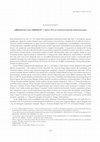
Szabados, György: “With great delight of the country” – On the coronation of King Stephen I the S... more Szabados, György: “With great delight of the country” – On the coronation of King Stephen I the Saint.
– Summary –
Presently available Hungarian historiography has not established a decisive consensus regarding the site of King Stephen’s coronation. Based on the late 15th century records of Franciscan friar Osvát Laskai, it has been generally accepted that Stephen was crowned at Székesfehérvár. However, recent scholarship has looked to establish Esztergom as the site of Stephen’s coronation by referring to a royal charter issued in 1274 by King Ladislaus IV. From a source critical perspective, one would indeed posit that the validity of records kept by a Franciscan friar in the late middle ages could hardly compete with an official royal charter issued during the Árpád-dynasty. Nevertheless, it is in fact the writings of Osvát Laskai that we must look to as being authoritative. Firstly, because Ladislaus IV’s charter does not actually make mention of Stephen’s supposed coronation at Esztergom. Rather, it only asserts the coronation functions undertaken by the Archbishopric of Esztergom. Furthermore, the logical chronology of events after 1038 only serve to support the possibility that Stephen was indeed crowned at Székesfehérvár. We have early records placing the coronation of the second king of Hungary, Peter Orseolo at Székesfehérvár. However, as he not only descended from the matrilineal line of the Árpád-dynasty, but also vowed allegiance to the Holy Roman Empire, thereby making Hungary a vassal state, Peter was not a favored king and considered a usurper to the throne. King Andrew I deposed Peter and represented the restoration of the patrilineal and therefore legitimate line of succession of the Árpád-dynasty. It follows that for Andrew I, the question of legitimacy was key and to emulate Peter Orseolo, a usurper, would be unacceptable. Rather, King Andrew I would look to establish his right to the throne by being crowned in the same place as King Stephen. Following this logic, had Stephan been crowned at Esztergom, King Andrew I would have returned there to be crowned. However, Andrew I was crowned at Székesfehérvár, thus suggesting that it was indeed the location of Stephen’s coronation. Moreover, in the event of Stephen’s possible coronation in Esztergom, the Archbishop of Esztergom could not have been persuaded to perform the ceremony in Székesfehérvár. Stephan donated the spoils won from victorious military campaigns against the Bulgarians to the already existing Royal Basilica dedicated to Virgin Mary at Székesfehérvár. Hence, it then stands to reason that the construction of the church predates the Bulgarian military campaigns which have been placed around 1003 and/or 1015.Therefore, it can be stated that late in the year 1000 Stephen was crowned at the Royal Basilica at Székesfehérvár, which consequently places the years of construction between 997 and 1000.
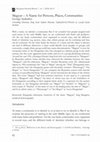
With a name, we identify a community. But if we consider how people assigned and used names in th... more With a name, we identify a community. But if we consider how people assigned and used names in the early Middle Ages, we are confronted with limits and problems. On the one hand, communities were organized in several ways, and the different kinds of identities (e.g. person, state, clan, ethnic group) can be confusing and thus can be confused. On the other hand, the history of a name and the object it denote can lead in different directions: a name could identify more peoples or groups, and conversely, a single ethnic group could have many denominations. “Magyar” is now the vernacular name of the Hungarians who first emerged as a distinct group in the ninth century, but this noun appeared much earlier and not in a group-identifying function. Around the year 530, a Kutrigur-Hunnic king lived who was mentioned as “Muageris” by Byzantine authors. Some scholars have observed the similarity between the name “Muageris” and the ethnonym “Magyar.” Another Byzantine work (De Administrando Imperio ca. 950) enumerates the “clan of Meger” among the “Turk” [Hungarian] clans, and centuries later the Hungarian gestas and chronicles mention “Hetumoger,” “het Mogor” as “seven Hungarians.” If one compares the Byzantine sources with internal sources, it is possible that King “Muageris” can be inserted into the frame of the written data. The noun “Magyar” had four coherent functions. It was used as 1) a personal name, “Muageris” and “Magor,” the latter of whom was one of the forefathers of the Hungarians according to their original ethnic myth; 2) a toponym for the ancient homeland, i.e. the Hungarian chronicles use “Magor” for “Scythia” or “Magoria” to refer to part of “Scythia”; 3) the name of one of the leading clans, the clan of “Meger”; and 4) an ethnic name, i.e. “Hetumoger” or “het Mogor” as ‘seven Hungarians’.
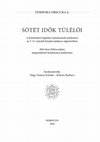
Continuity and/or encounter? “Avar” and “Hungarian” in the 9th
century Carpathian Basin.
The Hung... more Continuity and/or encounter? “Avar” and “Hungarian” in the 9th
century Carpathian Basin.
The Hungarians of Álmos and Árpád arrived into a land that was geographically uniform, but politically divided, after they had acquired a thorough knowledge of the area from the 860s onwards. Roughly this all, what we can state with confidence. The 9th century Carpathian Basin – the middle of Europe – was situated on the edges of Greek and Latin literacy. Since there are no internal written sources left for us from this period, it is possible to formulate statements about the political (and ethnic) situation of the area only through external written records and archaeological finds. While the circle of material culture expands continuously, the emergence of further written sources is coincidental. Therefore, to say something new as a historian is possible only through the re-interpretation of the well-known records. Recently, we could see several examples for this. It has become clear through the research of Samu Szádecky-Kardoss and Teréz Olajos, that the downfall of the Avar Khaganate at the beginning of the 9th century did not mean the extinction of the Avar population. The written sources report about three surviving groups: one of them lived in Western Pannonia, turned to Christianity and lived under Frankish rule by the 860s (Conversio Bagoariorum et Carantanorum); the second lived in the Great Hungarian Plain around the end of the 9th century (Regino); and the third group was still distinguishable from the Croatians living around them at the middle of the 10th century (De Administrando Imperio). Meanwhile, by 862 Hungarians appeared in the region of the Eastern Frank Empire (Annales Bertiniani), and in 881 they fought together with the Kabars in the vicinity of Vienna (Annales Iuvavenses). It is a question, from where the Hungarians and Kabars marched to the Vienna Basin, and where they returned to afterwords. Still to Etelköz, or already into the Carpathian Basin? Béla Miklós Szőke argued convincingly for the latter case; therefore, it became important to reconsider the chronology of the Hungarian Conquest itself.
Thus, we have to count with the common appearance of the “Avars” and “Hungarians” in the Carpathian Basin. However, we cannot treat these two identities isolated, but only within the problematic of the presence of other communities (Frankish, Moravian, Bulghar). The following scheme unfolds from the written sources: although we have to count with some Slavic presence, we cannot talk about mass Slavicization, just as about extended Bulghar presence, or the fabrication of the “Great Moravian Empire”.
It is possible to refine somewhat the analysis of this scheme through the application of a sociological perspective. I considered it useful to categorize the assimilation of communities into three modes based on the intensity of the identity change, in the sequence of integration, acculturation and assimilation. Accordingly, the Hungarian Great Principality integrated the surviving “Avar” population of the Avar Khaganate peacefully in a political sense. Because of the common steppe roots and pagan culture of the Avars and Hungarians, there was no need for a forceful religious acculturation, and even the baptized, Christian Pannonian Avars quickly “returned to paganism”. The terminal point of the assimilation process brought the victory
of Hungarian ethnic identity. In the end, the “Avars” first got a new state identity from the conquerors of Álmos and Árpád, then were incorporated into the Hungarian commoners, already with a Hungarian self identity: the powers of continuity and encounter formed in this way “Avar” and “Hungarian” history in the 9th century Carpathian Basin.

Great Prince Álmos of Hungary (ca. 820 - ca. 894) played an illustrious role in the early Hungari... more Great Prince Álmos of Hungary (ca. 820 - ca. 894) played an illustrious role in the early Hungarian myth and history. Although he established first the Hungarian steppe-empire and he started to lead the Hungarians into the Carpathian Basin (ca. 862), his mythical memory can be discussed better than his temporal acts as a Monarch. Great Pirnce Álmos' importance was foretold by a myth. The version of the Hungarian chronicles is the following: "In Scythia a son was born to Eleud, who was the son of Ugeg, by Eunodbilia; and this son of Eleud was given the name of Almus. For when his mother was big with child, she dreamed that a bird flew towards her which had the likeness of a hawk, and that from her womb a torrent gushed forth and spread itself over strange lands; and this was a sign that renowned kings would be born from her womb. Because in our language a dream is called 'alm', and because the birth of this child was foretold in a dream, he was called Almus, who was the son of Eleud, who was the son of Ugeg, who was the son of Ed, who was the son of Chaba, who was the son of Ethele [i. e. Attila], who was the son of Bendekus..." So, Álmos' "personal prehistory" contains two main components.
On the one hand the myth with mother's dream, a divination foretold by a falcon-like bird of prey, and torrent demonstrating his future importance. Álmos' origin-myth contains important motif-paralells with the story of Cyrus and Buddha .The elemental common features of their myth are the following: 1) royal (or at least noble) human parents, 2) dreams/visions of a mother, 3) prophecy on the glorious realm (or at least its possibility) of the nascent child.
On the other hand, the tradition of the lineage from King Attila the Hun (434-453 AD). Since the mythical function of the bird was divinatory, not a genitor, the bloodline from Attila was not broken before Álmos, even in the language of the myth. Therefore, I must emphasize again, these two main components do not exclude, on contrary, they complete each other. Moreover, one more possible factor could conjugate the myth and the Attila-genealogy. The important motif is the torrent of water and, as the old Hungarian name of the river was Etel or Etil, it refers to Etele alias Attila whose name had a sense of 'great river' and was used for the rule on the throne.
In this way united our twofold origin-story: "the torrent [i. e. Etil] gushed forth and spread itself over strange lands; and this was a sign that renowned kings would be born from her [Eunodbilia’s] womb". In the language of the myth was revealed that Attila reincarnated in his far descendant Álmos.

Szabados, György
Tradition, remembrance and criticism in the early Hungarian historiography. Summ... more Szabados, György
Tradition, remembrance and criticism in the early Hungarian historiography. Summary
The Hungarians are the only one nation which had been formed in the cultural community of the Eurasian Steppe and joined the Western European Christian world. During this process the governmental system was changed first: instead of the steppe empire a Christian kingdom started its existence by the coronation of King István I the Saint in 1000. The new literacy was initiated, written in Latin by clergymen. These circumstances determined the beginning of the Hungarian historiography, too. Although the gestas and chronicles survived only from the 13th century in Hungary and later, but some characteristics of their texts proves, that the Ancient Gesta was written during the reign of King András I (1046-1060), and several continuators worked in the 11th and 12th centuries. The aim of this paper was to frame the process of the earliest Hungarian historiography. During this period the remembrance was controlled by the royal dynasty and the clerical authors, the tradition confronted the criticism.
A Régi Magyar Költők Tára sorozat középkori maradványokat közreadó kötete élén negyven strófát s... more A Régi Magyar Költők Tára sorozat középkori maradványokat közreadó kötete élén negyven strófát számláló históriás ének áll; a magyar honfoglalási epika legrégebbi ránk maradt verses emléke. Az utólag Ének Pannónia megvételéről címmel ellátott mű a fehér ló mondáját szedi versbe. Jelen írásom célja a mitikus és a történelmi értelemben veendő forrásérték mérlegelése, különös tekintettel arra a körülményre, hogy a honfoglalást előadó fehér ló mondája latin nyelvű középkori krónikaszerkesztményeinkben is olvasható. A magyar vers és a latin próza összevetésével arra a következtetésre jutottam, hogy mindkét szöveg közvetlenül a monda ősi szóhagyományára megy vissza.
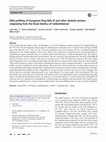
A few decades after the collapse of the Avar Khaganate (c. 822 AD), Hungarian invaders conquered ... more A few decades after the collapse of the Avar Khaganate (c. 822 AD), Hungarian invaders conquered the Carpathian Basin (c. 862–895 AD). The first Hungarian ruling dynasty, the Árpáds played an important role in European history during the Middle Ages. King Béla III (1172–1196) was one of the most significant rulers of the dynasty. He also consolidated Hungarian dominance over the Northern Balkans. The provostry church of the Virgin Mary (commonly known as the Royal Basilica of Székesfehérvár) played a prominent role as a coronation church and burial place of medieval Hungarian kings. The basilica's building and graves had been destroyed over the centuries. The only royal graves that remained intact were those of King Béla III and his first spouse, Anna of Antioch. These graves were discovered in 1848. We defined the autosomal STR (short tandem repeat) fingerprints of the royal couple and eight additional individuals (two females and six males) found in the Royal Basilica. These results revealed no evidence of first-degree relationship between any of the investigated individuals. Y-chromosomal STR profiles were also established for all the male skeletons. Based upon the Y-chromosomal data, one male skeleton showed an obvious patrilineal relationship to King Béla III. A database search uncovered an existing Y-chromosomal haplotype, which had a single-repeat difference compared to that of King Béla. It was discovered in a person living in an area close to Hungary. This current male line is probably related paternally to the Árpád Dynasty. The control region of the mitochondrial DNA was determined in the royal couple and in the remains of the inferred relative. The mitochondrial results excluded sibling relationship between the King and the patrilineal relative. In summary, we successfully defined a Y-chromosomal profile of King Béla III, which can serve as a reference for the identification of further remains and disputed living descendants of the Árpád Dynasty. Among the examined skeletons, we discovered an Árpád member, whose exact affiliation, however, has not yet been established.
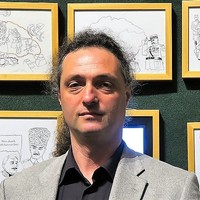










Uploads
Papers by György dr. Szabados
Abstract
In December 1848, among the ruins of the south nave of the Royal Basilica in Székesfehérvár, an undisturbed burial site of a royal couple was found, together with three more burial sites. Two contemporary scholars, János Pauer historian and János Érdy archeologist identified the two royal burial sites as the tomb of King Béla III of Hungary (1172–1196) and his first wife, Agnes de Châtillon also known as Queen Anna of Antioch (†1184/85). The identification of the royal couple is valid in our time, too, as it has been strengthened by the result of older and newer sciences, as well, from the aspects of genealogy, art history, archaeology, medical science, archaeogenetics.
In our paper we present the latest 3D facial reconstructions of King Béla III and his first wife Queen Anna and the background of re-creation of their face and the whole reconstruction method. After a summary of the archaeological and historical data available for the present work, we give an outline on the basics and the brief history of facial approximation or reconstruction. Then we discuss the sculptural reconstructions of the faces made by Károly Árpás and Gyula Skultéty in 1972 as well as 1986 and based on the data available the process of their work.
The process of newest reconstructions by Emese Gábor is described in detail starting with the graphical sketch and ending with the sculptures, emphasizing the new aspects and solutions compared to the methods known till now. The most important difference between the first two works and the present, third work is the following: in 2014 CT-imaging were made in the Department of Radiological Diagnostics of the National Institute of Oncology (Budapest, Hungary). Thus, this CT-documentation on the skulls of the royal couple helped Emese Gábor to make more precise facial reconstructions, than her two honourable predecessors.
Facial reconstruction is a living, evolving science, as well as an artistic creative process. Its rapid development and expansion are predictable. However, as far as we know today, it is safe to say that without further data, no significant changes to rulers’ facial features can be expected based on the remaining skulls. The quality of the facial reconstructions we have presented is due not only to their artistic outworking but also to the scientific data available only recently, especially the computed tomography images of the skulls.
The early Hungarian narrative sources (legends, gestas, chronicles) tell no information regarding the site of King Stephen’s coronation. The eldest information was recorded only in 1497. A Franciscan friar Osvát Laskai asserted that Stephen was crowned at Székesfehérvár. In 2019 my paper strengthened this data considering the indirect facts and circumstances taken from earlier narrative sources. Nevertheless, recent scholarship has looked to establish Esztergom as the site of Stephan’s coronation: a paper was published in 2020 asserting that some phrases in the legends of King Stephen the Saint arguing against the possibility of the first Hungarian royal coronation was celebrated in Székesfehérvár and especially in the Royal Basilica dedicated to Virgin Mary. My recent paper analyses this critical point of views and resulted that even these legends – written in the last decades of the 11th century – strengthen the possibility of the first Hungarian royal coronation in Székesfehérvár and especially in the Royal Basilica, too. According to all the earlier source-data and aspects Osvát Laskai recorded a real tradition, and my result has been confirmed. Therefore, it can be stated once again that late in the year 1000 Stephan was crowned at the Royal Basilica at Székesfehérvár, which consequently places the years of construction between 997 and 1000.
On the identification of a royal graves found in 1848 – once again
During the excavation of 1848 five burial places were found amongst the ruins of the Royal Basilica in Székesfehérvár. Two of the skeletons had been defined as a royal pair. Soon after János Pauer and János Érdy identified them with King Béla III the Great (1172–1196) and his first wife Queen Anna. Their identification became accepted generally by the scholars until Endre Tóth published a counter-advice. According to his archaeological aspects the two skeletons were the mortal remains of King Kálmán the Learned (1095–1116) and his first wife Queen Eleutheria/Felicia. A paper of mine supported the elder identification in 2016. On the one hand the argumentation of Tóth was limited to some uncertain archaeological dating. On the other hand, the various disciplines prove all that this royal pair was King Béla III and Queen Anna. 1.) The man’s skeleton was remarkably tall, and Richard of London emphasized the tallness of the Hungarian king whom he met in 1189. 2.) The Nordic features of the king’s body were resulted from the kinship with the dynasty of the Kievan Rus which had Viking origin, but it was true only for Béla’s ancestors. 3.) The head-shrine’s portrait of King László I the Saint (1077–1095) is similar with the face-reconstruction of the skull: as László I was canonized in 1192, thus Béla III could be the model for the shrine. 4.) The woman’s skeleton has signs of many pregnancies: Anna bore 7, but Eleutheria/Felicia had only 3 children. 5.) Kálmán had serious inflammation of ear which hurts the skull, but the royal skull shows no symptom of this illness. 6.) Kálmán ordered by his own law that Christians must be entombed in cemetery, but the skeletons were excavated from inside the ruins of the Royal Basilica in Székesfehérvár.
Nevertheless in 2019 a book was published by Gergely Buzás and Olivér Kovács and their identification is similar with Tóth’s theory. Unfortunately, their arguments are based on false logic, ignoring and misinterpretation of certain scientific facts considering the archaeology, history, anthropology, and medical science as well. My paper makes the detailed criticism of their reasoning. Furthermore, the recent results of archaeogenetic research strengthen the correctness of the original identification published by János Pauer and János Érdy, complete this identification with naming the other skeletal remains. During the excavation in 1848 there was found a small group of 5 graves with 6 skeletons: 1.) a King with his crown, 2.) a Queen with her crown, 3.) a male skeleton of an elder burial on the King’s right side, 4.) a skeleton of a pregnant lady with her unborn child (in the 7th or 8th month of her pregnancy), 5.) a very fragmented skeleton. A study was published first in 2018 by Judit Olasz and her contributors and soon after a book was edited in 2019 by Miklós Kásler and Zoltán Szentirmay on the identification of these royal skeletons, applying historical, archaeological, anthropological, radiological, morphological, radiocarbon dating and genetic methods. Although some of the skeletons are lost, but the scholars could reconstruct the burials of the afore-mentioned small group. 1.) King Béla III (†1196), 2.) his wife Queen Anna (†1184/85), 3.) on the right side of King Béla III. laid his paternal grandfather King Béla II the Blind (†1141 – his skull was lost in the second half of the 19th century), 4.) by the feet of the royal pair laid Princess Predslawa of Kiev (†ca. 1110) mother of King Béla II with her unborn daughter (the skeleton of the lady was lost, but the remains of the female foetus are available), 5.) the very fragmented skeleton was lost, too, but it can be identified with Duke Álmos, father of King Béla II (†1127 in exile in Byzantium and his body was exhumed in 1137 and re-buried in Székesfehérvár). These dynastical relations can be reconstructed in an only viable way if we accept the fact that from the grave of King Béla III was excavated King Béla III himself.
Áttekintésem a „Magyar” tulajdonnév korai jelentéseit veszi sorra. Köztudomásúlag a magyar egy belső, anyanyelvi jelölője annak a népnek, amelyik a IX. század elejétől önálló történelmi tényezőként különíthető el. Ám ez a tulajdonnév jóval korábban bukkant fel, méghozzá nem csoportjelölői funkcióban: egy 530 körül élt kutrigur-hun király nevét „Muageris” formában jegyezték le bizánci történetírók, s több XIX–XX. századi tudósunk elfogadta a „Muageris” (Muagyerisz) személynév és a „magyar” népnév közötti összefüggést. Egy 950 körül összeállított bizánci államkormányzati kézikönyvben „Meger geneája” kap említést a „Turk” [magyar] vezéri nemzetségek között. Néhány évszázaddal később a hazai geszták és krónikák „Hetumoger”, „het Mogor” jelzős szerkezettel utalnak a hét magyar vezéri nemzetség fejére, „Dentumoger” néven viszont egy földrajzi fogalom, a honfoglalás előtti magyar szállásterület említtetik egy helyütt. Tekintettel arra, hogy több más esetben is (legismertebb Oszmán esete) előfordult, hogy egy személyről előbb egy nemzetséget, majd egy egész népet neveznek el, a „Magyar” változatot steppei analógia is gyámolítja. Ennél még fontosabb, hogy „Muageris” király neve jól illeszkedik a többi írott emlék alkotta vázba.
Összességében véve a „magyar/Magyar” név négy koherens funkcióban tűnik elénk a kora középkori történelemből.
1) Személynév: „Muageris” kutrigur-hun király a Fekete-tenger vidékén, a csodaszarvas mondájának testvérpárjából „Magor” ugyanott.
2) Helynév: az őshaza egésze („Dentumoger”, „Magor”), avagy része („Magaria/Magoria”).
3) Vezéri nemzetség neve: „Meger”.
4) Népnév: „Hetumoger”, „het Mogor”.
A több hullámban történt magyar bejövetel gondolata az első Árpád-kori krónikák és geszták óta helyet kapott történetírásunkban. Ezt az elméletet újabban László Gyula fémjelzi, aki a „kettős honfoglalás” kifejezést alkalmazta rá. Ennek lényege, hogy a magyarság egyes csoportjai jóval a honfoglalás előtt bebocsáttatást nyertek az Avar Kaganátusba, ezért Álmos és Árpád népe nagy tömegű magyarságot talált a Kárpát-medencében. Őket a legvalószínűbb eshetőség szerint a 670-es években bevándorló „griffes-indás” kultúrájú kései avarok, vagyis „onogur-magyarok”, „elő-magyarok” leszármazottainak tartotta, de hangsúlyozta, hogy más megoldás is elképzelhető. Az elmélet kidolgozása során a neves régészprofesszor régészeti, történeti, embertani és nyelvi kútfőket egyaránt csatasorba állít.
László Gyula több évtizedes tudósi fejlődése során érlelte elgondolását. A honfoglaló magyar nép élete bemutatásának szentelt könyvében (1944) az avar tömegek fennmaradása és a magyar uralom alá jutása mellett foglalt állást, hangsúlyozván, hogy az el nem szlávosodott avarság zöme hun származású volt, és e néven jutott emlékezete a középkori magyar krónikák lapjaira, és ez magyarázza, hogy az avar név miért nem szerepel középkori történetírásunkban. Rátérve a „kettős honfoglalás” elméletére: László Gyula „régészeti és történeti töprengések” közepette adott hangot ama meglátásának, amely szerint írott és tárgyi kútfők egyaránt arról tanúskodnak, hogy a Kárpát-medencébe Attila hun király halála (453) után több hullámban érkeztek steppei kultúrájú embertömegek. Mivel a régészeti érvek mérlegelése eleve kívül esik szakmai illetékességem körén, ezért csupán a történeti és a nyelvtörténeti vonatkozásokra összpontosíthatok.
Az írott történeti kútfőkből kiderül, hogy az Avar Kaganátus területére több hullámban is érkeztek be steppei rokon népek: 595 táján szabirok és kutrigurok, 670 körül onogurok. Ugyanezen forráscsoport ad számot arról, hogy az Avar Kaganátus összeomlása (822 k.) után lakossága nem pusztult ki, hanem a magyar honfoglalást megérve a Magyar Nagyfejedelemség, majd Magyar Királyság köznépévé, a magyar etnogenezis Kárpát-medencei fejezetének részesévé vált.
Noha nincsenek nyelvi adataink arra, hogy az avar állam melyik steppei eredetű komponensében lehetne „elő-magyar” népi és nyelvi közösséget felfedezni, de a „kettős honfoglalás” elméletének történeti forrásalapja megvan, sőt általa egy logikusabb rekonstrukciót adhatunk a Kárpát-medence késő-népvándorláskori múltjáról.
A történelem fogalmával talán nincs gond, hiszen ennek hallatán a múltbeli dolgokra gondolunk, illetve arra, ami ezekből megismerhető. A mítosz fogalmának jelentése viszont rétegzettebb. A mítosz praktikusan szólva olyan szöveg, ami elhelyezi az embert a világban, identitást ad neki: egy megalapozó történetté sűrített múlt. De mind a mítosz, mind a történelem olyan szimbolikus forma, ami összeköti a múltat a jelennel: a múlt egy-egy fajta mentális modellje, a kultúra hosszú távú emlékezete.
A magyar – egyedülálló módon – az a máig fennmaradt közösség, amelynek nemcsak első államhatalmi megszerveződése, hanem etnogenezise is a steppei kultúrkörben zajlott le; ezzel a keleti örökséggel integrálódott a középkori Nyugat-Európa szellemi-politikai világába, s fejezte ki azon belül, annak szabályai szerint műveltségének hagyatékát. Az írásba foglalást természetesen megelőzte a szájhagyományban élő mondakincs keletkezése, ám azokból csak azokat ismerhetjük, amelyek felvétettek régi gesztáinkba és krónikáinkba.
Ismeretes, hogy az első ezredfordulón végrehajtott hivatalos kultúraváltás következtében idegen nyelvi (latin) és vallási (keresztény) írástudói közeg várta az ősmúlt emlékét, ilyenformán egy idegen szellemi szűrő is döntött arról, melyek legyenek a pogány előidők lejegyzésre méltó elemei. Ám ezt ellenkező irányból szemlélve derűlátók lehetünk, mert voltak olyan erős hagyományelemek, amelyek át tudtak hatolni ezen a szűrőn, ekképp biztosították túlélésüket a pergamenlapokon. Bizakodásra ad okot még az is, hogy az újabb kutatás szerint a történeti narratív emlékezet mintegy hét nemzedéket fog át, ami akár két-három évszázadot, sőt ennél is hosszabb időt jelenthet. Ebből adódóan az eredethagyományok tekintetében régi gesztáink, krónikáink forrásértéke nagyobb, mint azt a némelykor túl szigorú filológiai kritika vélte.
Az őstörténeti vonatkozású magyar mítoszok között végzett szerény tallózás a mítoszokat eredetiségük, identitásalapozó szerepük mentén veszi sorra.
Az eredethagyományok közül elsőként a magyar nép eredetmítosza említendő, a csodaszarvas-monda. A magyar állam eredetmítosza a turul-monda, Álmos nagyra hivatottságának elbeszélése. E két monda nem áll ellentétben a magyarok hun hagyományával és mindkettő hiteles, eredeti mitikus szöveg. A mítosz identitásalapozó erejénél fogva megőrzendő szellemi kincs, a reális történeti tudatot nem mítosztalanítani kell, hanem álmítosztalanítani, vagyis kiszűrni azokat az identitáshamisító elemeket, mint például Árpád és idősebb fiainak képzelt halálát a 907-es pozsonyi csatában, amelyek nem eredeti mítoszok, hanem dilettáns városi legendák.
What can and cann ot be gleaned from the written sources
Two profound changes occurred in the period spanning the ninth to twelfth centuries of early Hungarian history: the first, the migration to a new homeland in the later ninth century, when the people of the Hungarian Great Principality settled in Central Europe, a region more closed than the steppe; the second, the cultural transformation at the dawn of the new millennium in the wake of the foundation of the Hungarian state involving the change in customs enforced by the state. Based on the meagre information contained in the written sources, I have reviewed what can and what cannot be gleaned from the Hungarian and the external sources. I focused on three periods: the “nomadism” of the ninth–tenth-century Hungarians, the mobility of the eleventh century commoners, and the perception of the mid-twelfth-century Hungarian Kingdom from two different perspectives. My general conclusion is that the written sources offer little in the way of information for reconstructing ninth- to twelfth-century lifeways. The main difficulties can be summarised as follows: firstly, there are no contemporaneous internal sources on the ninth–eleventh-century Hungarians. The period’s Hungarians are solely discussed and described in works whose authors had an entirely different cultural background (Byzantine emperors, Arab geographers), had never set foot in the Hungarian lands – neither in Etelköz, nor in the Carpathian Basin – and their information was second- or third-hand at best and rarely reflected an intimate knowledge of their subject (Ibn Hayyan, Guibert of Nogent). The Hungarian written sources are fairly late and owing to their scarce number, they do not provide insights into regional traits. The earliest writers who recorded their personal experiences lived in the twelfth century: the German bishop Otto of Freising passed through the country in 1147, while the Andalusian Arab traveller Abu Hamid al-Gharnati lived in Hungary between 1150 and 1153. Their accounts are also coloured by their cultural otherness. Nevertheless, their accounts, if treated with the necessary critique, add interesting cultural details to the broad picture painted by archaeologists, who are alone able to refine that picture on the regional and micro-regional level.
An Overview of the Main Threads of Medieval Hungarian Historiography
(Abstract)
Hungarians are the only nation to have emerged from the cultural community of the Eurasian Steppe and became one of the kingdoms of Western Christian Europe. During this transition the governmental system changed from a steppe empire to a Christian kingdom which began with the coronation of King Stephan I the Saint in the year 1000. With the adoption of Latin by the clergy as the official language of literacy, this period also heralded the beginning of Hungarian historiography. Although the surviving Hungarian gestas and chronicles date to the 13th century onward, their philological characteristics prove that they drew on a much older text: the Ancient Gesta written during the reign of King Andrew I (1046–1060) with additions from later continuators in the 11th and 12th centuries. The aim of this paper is to frame the evolution of Hungarian historiography from its naissance to the last medieval chronicle compiled and edited by John Thuróczy in 1488. During this period historical remembrance was controlled by the royal dynasties and the clerical authors who at times treated some oral traditions with incredulity and criticism.
The reconstruction of early Hungarian historiography is complicated by several factors. The most important factor is that most of the early gestas and chronicles are now lost and only traces of them are preserved in later texts. Thus, attempts to reconstruct these early chronicles rely on 13th–14th century texts. Since the earliest of these, Simon of Kéza’s Gesta Hungarorum (ca. 1282–1285), survives only in excerpts, we must instead look to 14th century chronicles for a more complete picture of our early historiographic tradition. For this, we turn to two groups of texts. The first is the ancestor of the Buda Chronicle, which was completed before 1342 and the other is the Hungarian Illuminated Chronicle, the basic text which was written in 1358 by its author, most likely Mark of Kált. This Mark of Kált was a clergyman of the royal chapel, before becoming a canon warden to the provost church of the Royal Coronation Basilica dedicated to the Virgin Mary in Székesfehérvár, where due to his position he had access to written records kept in the royal archives in the cathedral. Though in the absence of codices we cannot be sure that the surviving gestas and chronicles represent the dominant historiographic directions of the times, there are several signs that point in this direction. Most importantly, the authors of these gestas and chronicles did not simply continue writing history, but even challenged and debated the works of their predecessors, sometimes reinterpreting the earlier texts. Furthermore, I aim to point out that the Angevin-era codex writers, considered it is important to retain the structure of the Hun-Magyar ancient history which can be read in the gesta of Simon of Kéza, at the same time keeping semantic and gesta-specific characteristics intact, only making minor tweaks to a few elements. From the viewpoint of the process of historiography, in certain manuscripts there are signs of value worthy of notice. The following should be considered representative: the codex of the Hungarian Illuminated Chronicle from the time of Louis I (1342–1382), and two books from the time of Matthias Hunyadi I (1458–1490): the concise Buda Chronicle (1473), the first printed book to be printed in Hungary, and John Thuróczy’s Chronica Hungarorum, of the late 15th century (1488 printed in Brünn and Augsburg), which is a summary of medieval Hungarian chronicle literature intended for a broader audience. I believe that it is logical to conclude from these official Hungarian histories that the main thread of historiography was dictated by state interest.
Álmos and his son Árpád conquered the Carpathian Basin, thus the Hungarian Great Principality represented the type of the Eurasian steppe empires in Central Europe from c. 862 until 1000. Then this early Hungarian state had been re-organized as a Christian Kingdom by Saint Stephen I, who was the 5th descendant of Álmos. Saint Stephen I as the last Great Prince (997–1000) and first King (1000–1038) of Hungary, joined the post-Roman Christian political system and cultural commonwealth of the Latin Europe.
The year of 1000 is only a symbolical date to separate two eras in the Hungarian past. But if we consider the political phenomena (the two types of the early Hungarian statehood and the way of transformation) in their complexity, there can be found important characteristic features which are in contradiction with each other. On the one hand the territory of the state and the dynastical legitimacy of the supreme power – and the dynasty itself – remained the same, the population remained the same, too (or at least its changes caused by immigrant groups were independent from the political/governmental changes). On the other hand, the royal legitimacy was completed by a new component: the Christian king could rule only “by the favour of God”, new dignities and institutions had been initiated and the elder ones could not survive. The new Hungarian state was established with the opposite forces of the continuity and innovations, as well.
– Summary –
Presently available Hungarian historiography has not established a decisive consensus regarding the site of King Stephen’s coronation. Based on the late 15th century records of Franciscan friar Osvát Laskai, it has been generally accepted that Stephen was crowned at Székesfehérvár. However, recent scholarship has looked to establish Esztergom as the site of Stephen’s coronation by referring to a royal charter issued in 1274 by King Ladislaus IV. From a source critical perspective, one would indeed posit that the validity of records kept by a Franciscan friar in the late middle ages could hardly compete with an official royal charter issued during the Árpád-dynasty. Nevertheless, it is in fact the writings of Osvát Laskai that we must look to as being authoritative. Firstly, because Ladislaus IV’s charter does not actually make mention of Stephen’s supposed coronation at Esztergom. Rather, it only asserts the coronation functions undertaken by the Archbishopric of Esztergom. Furthermore, the logical chronology of events after 1038 only serve to support the possibility that Stephen was indeed crowned at Székesfehérvár. We have early records placing the coronation of the second king of Hungary, Peter Orseolo at Székesfehérvár. However, as he not only descended from the matrilineal line of the Árpád-dynasty, but also vowed allegiance to the Holy Roman Empire, thereby making Hungary a vassal state, Peter was not a favored king and considered a usurper to the throne. King Andrew I deposed Peter and represented the restoration of the patrilineal and therefore legitimate line of succession of the Árpád-dynasty. It follows that for Andrew I, the question of legitimacy was key and to emulate Peter Orseolo, a usurper, would be unacceptable. Rather, King Andrew I would look to establish his right to the throne by being crowned in the same place as King Stephen. Following this logic, had Stephan been crowned at Esztergom, King Andrew I would have returned there to be crowned. However, Andrew I was crowned at Székesfehérvár, thus suggesting that it was indeed the location of Stephen’s coronation. Moreover, in the event of Stephen’s possible coronation in Esztergom, the Archbishop of Esztergom could not have been persuaded to perform the ceremony in Székesfehérvár. Stephan donated the spoils won from victorious military campaigns against the Bulgarians to the already existing Royal Basilica dedicated to Virgin Mary at Székesfehérvár. Hence, it then stands to reason that the construction of the church predates the Bulgarian military campaigns which have been placed around 1003 and/or 1015.Therefore, it can be stated that late in the year 1000 Stephen was crowned at the Royal Basilica at Székesfehérvár, which consequently places the years of construction between 997 and 1000.
century Carpathian Basin.
The Hungarians of Álmos and Árpád arrived into a land that was geographically uniform, but politically divided, after they had acquired a thorough knowledge of the area from the 860s onwards. Roughly this all, what we can state with confidence. The 9th century Carpathian Basin – the middle of Europe – was situated on the edges of Greek and Latin literacy. Since there are no internal written sources left for us from this period, it is possible to formulate statements about the political (and ethnic) situation of the area only through external written records and archaeological finds. While the circle of material culture expands continuously, the emergence of further written sources is coincidental. Therefore, to say something new as a historian is possible only through the re-interpretation of the well-known records. Recently, we could see several examples for this. It has become clear through the research of Samu Szádecky-Kardoss and Teréz Olajos, that the downfall of the Avar Khaganate at the beginning of the 9th century did not mean the extinction of the Avar population. The written sources report about three surviving groups: one of them lived in Western Pannonia, turned to Christianity and lived under Frankish rule by the 860s (Conversio Bagoariorum et Carantanorum); the second lived in the Great Hungarian Plain around the end of the 9th century (Regino); and the third group was still distinguishable from the Croatians living around them at the middle of the 10th century (De Administrando Imperio). Meanwhile, by 862 Hungarians appeared in the region of the Eastern Frank Empire (Annales Bertiniani), and in 881 they fought together with the Kabars in the vicinity of Vienna (Annales Iuvavenses). It is a question, from where the Hungarians and Kabars marched to the Vienna Basin, and where they returned to afterwords. Still to Etelköz, or already into the Carpathian Basin? Béla Miklós Szőke argued convincingly for the latter case; therefore, it became important to reconsider the chronology of the Hungarian Conquest itself.
Thus, we have to count with the common appearance of the “Avars” and “Hungarians” in the Carpathian Basin. However, we cannot treat these two identities isolated, but only within the problematic of the presence of other communities (Frankish, Moravian, Bulghar). The following scheme unfolds from the written sources: although we have to count with some Slavic presence, we cannot talk about mass Slavicization, just as about extended Bulghar presence, or the fabrication of the “Great Moravian Empire”.
It is possible to refine somewhat the analysis of this scheme through the application of a sociological perspective. I considered it useful to categorize the assimilation of communities into three modes based on the intensity of the identity change, in the sequence of integration, acculturation and assimilation. Accordingly, the Hungarian Great Principality integrated the surviving “Avar” population of the Avar Khaganate peacefully in a political sense. Because of the common steppe roots and pagan culture of the Avars and Hungarians, there was no need for a forceful religious acculturation, and even the baptized, Christian Pannonian Avars quickly “returned to paganism”. The terminal point of the assimilation process brought the victory
of Hungarian ethnic identity. In the end, the “Avars” first got a new state identity from the conquerors of Álmos and Árpád, then were incorporated into the Hungarian commoners, already with a Hungarian self identity: the powers of continuity and encounter formed in this way “Avar” and “Hungarian” history in the 9th century Carpathian Basin.
On the one hand the myth with mother's dream, a divination foretold by a falcon-like bird of prey, and torrent demonstrating his future importance. Álmos' origin-myth contains important motif-paralells with the story of Cyrus and Buddha .The elemental common features of their myth are the following: 1) royal (or at least noble) human parents, 2) dreams/visions of a mother, 3) prophecy on the glorious realm (or at least its possibility) of the nascent child.
On the other hand, the tradition of the lineage from King Attila the Hun (434-453 AD). Since the mythical function of the bird was divinatory, not a genitor, the bloodline from Attila was not broken before Álmos, even in the language of the myth. Therefore, I must emphasize again, these two main components do not exclude, on contrary, they complete each other. Moreover, one more possible factor could conjugate the myth and the Attila-genealogy. The important motif is the torrent of water and, as the old Hungarian name of the river was Etel or Etil, it refers to Etele alias Attila whose name had a sense of 'great river' and was used for the rule on the throne.
In this way united our twofold origin-story: "the torrent [i. e. Etil] gushed forth and spread itself over strange lands; and this was a sign that renowned kings would be born from her [Eunodbilia’s] womb". In the language of the myth was revealed that Attila reincarnated in his far descendant Álmos.
Tradition, remembrance and criticism in the early Hungarian historiography. Summary
The Hungarians are the only one nation which had been formed in the cultural community of the Eurasian Steppe and joined the Western European Christian world. During this process the governmental system was changed first: instead of the steppe empire a Christian kingdom started its existence by the coronation of King István I the Saint in 1000. The new literacy was initiated, written in Latin by clergymen. These circumstances determined the beginning of the Hungarian historiography, too. Although the gestas and chronicles survived only from the 13th century in Hungary and later, but some characteristics of their texts proves, that the Ancient Gesta was written during the reign of King András I (1046-1060), and several continuators worked in the 11th and 12th centuries. The aim of this paper was to frame the process of the earliest Hungarian historiography. During this period the remembrance was controlled by the royal dynasty and the clerical authors, the tradition confronted the criticism.
Abstract
In December 1848, among the ruins of the south nave of the Royal Basilica in Székesfehérvár, an undisturbed burial site of a royal couple was found, together with three more burial sites. Two contemporary scholars, János Pauer historian and János Érdy archeologist identified the two royal burial sites as the tomb of King Béla III of Hungary (1172–1196) and his first wife, Agnes de Châtillon also known as Queen Anna of Antioch (†1184/85). The identification of the royal couple is valid in our time, too, as it has been strengthened by the result of older and newer sciences, as well, from the aspects of genealogy, art history, archaeology, medical science, archaeogenetics.
In our paper we present the latest 3D facial reconstructions of King Béla III and his first wife Queen Anna and the background of re-creation of their face and the whole reconstruction method. After a summary of the archaeological and historical data available for the present work, we give an outline on the basics and the brief history of facial approximation or reconstruction. Then we discuss the sculptural reconstructions of the faces made by Károly Árpás and Gyula Skultéty in 1972 as well as 1986 and based on the data available the process of their work.
The process of newest reconstructions by Emese Gábor is described in detail starting with the graphical sketch and ending with the sculptures, emphasizing the new aspects and solutions compared to the methods known till now. The most important difference between the first two works and the present, third work is the following: in 2014 CT-imaging were made in the Department of Radiological Diagnostics of the National Institute of Oncology (Budapest, Hungary). Thus, this CT-documentation on the skulls of the royal couple helped Emese Gábor to make more precise facial reconstructions, than her two honourable predecessors.
Facial reconstruction is a living, evolving science, as well as an artistic creative process. Its rapid development and expansion are predictable. However, as far as we know today, it is safe to say that without further data, no significant changes to rulers’ facial features can be expected based on the remaining skulls. The quality of the facial reconstructions we have presented is due not only to their artistic outworking but also to the scientific data available only recently, especially the computed tomography images of the skulls.
The early Hungarian narrative sources (legends, gestas, chronicles) tell no information regarding the site of King Stephen’s coronation. The eldest information was recorded only in 1497. A Franciscan friar Osvát Laskai asserted that Stephen was crowned at Székesfehérvár. In 2019 my paper strengthened this data considering the indirect facts and circumstances taken from earlier narrative sources. Nevertheless, recent scholarship has looked to establish Esztergom as the site of Stephan’s coronation: a paper was published in 2020 asserting that some phrases in the legends of King Stephen the Saint arguing against the possibility of the first Hungarian royal coronation was celebrated in Székesfehérvár and especially in the Royal Basilica dedicated to Virgin Mary. My recent paper analyses this critical point of views and resulted that even these legends – written in the last decades of the 11th century – strengthen the possibility of the first Hungarian royal coronation in Székesfehérvár and especially in the Royal Basilica, too. According to all the earlier source-data and aspects Osvát Laskai recorded a real tradition, and my result has been confirmed. Therefore, it can be stated once again that late in the year 1000 Stephan was crowned at the Royal Basilica at Székesfehérvár, which consequently places the years of construction between 997 and 1000.
On the identification of a royal graves found in 1848 – once again
During the excavation of 1848 five burial places were found amongst the ruins of the Royal Basilica in Székesfehérvár. Two of the skeletons had been defined as a royal pair. Soon after János Pauer and János Érdy identified them with King Béla III the Great (1172–1196) and his first wife Queen Anna. Their identification became accepted generally by the scholars until Endre Tóth published a counter-advice. According to his archaeological aspects the two skeletons were the mortal remains of King Kálmán the Learned (1095–1116) and his first wife Queen Eleutheria/Felicia. A paper of mine supported the elder identification in 2016. On the one hand the argumentation of Tóth was limited to some uncertain archaeological dating. On the other hand, the various disciplines prove all that this royal pair was King Béla III and Queen Anna. 1.) The man’s skeleton was remarkably tall, and Richard of London emphasized the tallness of the Hungarian king whom he met in 1189. 2.) The Nordic features of the king’s body were resulted from the kinship with the dynasty of the Kievan Rus which had Viking origin, but it was true only for Béla’s ancestors. 3.) The head-shrine’s portrait of King László I the Saint (1077–1095) is similar with the face-reconstruction of the skull: as László I was canonized in 1192, thus Béla III could be the model for the shrine. 4.) The woman’s skeleton has signs of many pregnancies: Anna bore 7, but Eleutheria/Felicia had only 3 children. 5.) Kálmán had serious inflammation of ear which hurts the skull, but the royal skull shows no symptom of this illness. 6.) Kálmán ordered by his own law that Christians must be entombed in cemetery, but the skeletons were excavated from inside the ruins of the Royal Basilica in Székesfehérvár.
Nevertheless in 2019 a book was published by Gergely Buzás and Olivér Kovács and their identification is similar with Tóth’s theory. Unfortunately, their arguments are based on false logic, ignoring and misinterpretation of certain scientific facts considering the archaeology, history, anthropology, and medical science as well. My paper makes the detailed criticism of their reasoning. Furthermore, the recent results of archaeogenetic research strengthen the correctness of the original identification published by János Pauer and János Érdy, complete this identification with naming the other skeletal remains. During the excavation in 1848 there was found a small group of 5 graves with 6 skeletons: 1.) a King with his crown, 2.) a Queen with her crown, 3.) a male skeleton of an elder burial on the King’s right side, 4.) a skeleton of a pregnant lady with her unborn child (in the 7th or 8th month of her pregnancy), 5.) a very fragmented skeleton. A study was published first in 2018 by Judit Olasz and her contributors and soon after a book was edited in 2019 by Miklós Kásler and Zoltán Szentirmay on the identification of these royal skeletons, applying historical, archaeological, anthropological, radiological, morphological, radiocarbon dating and genetic methods. Although some of the skeletons are lost, but the scholars could reconstruct the burials of the afore-mentioned small group. 1.) King Béla III (†1196), 2.) his wife Queen Anna (†1184/85), 3.) on the right side of King Béla III. laid his paternal grandfather King Béla II the Blind (†1141 – his skull was lost in the second half of the 19th century), 4.) by the feet of the royal pair laid Princess Predslawa of Kiev (†ca. 1110) mother of King Béla II with her unborn daughter (the skeleton of the lady was lost, but the remains of the female foetus are available), 5.) the very fragmented skeleton was lost, too, but it can be identified with Duke Álmos, father of King Béla II (†1127 in exile in Byzantium and his body was exhumed in 1137 and re-buried in Székesfehérvár). These dynastical relations can be reconstructed in an only viable way if we accept the fact that from the grave of King Béla III was excavated King Béla III himself.
Áttekintésem a „Magyar” tulajdonnév korai jelentéseit veszi sorra. Köztudomásúlag a magyar egy belső, anyanyelvi jelölője annak a népnek, amelyik a IX. század elejétől önálló történelmi tényezőként különíthető el. Ám ez a tulajdonnév jóval korábban bukkant fel, méghozzá nem csoportjelölői funkcióban: egy 530 körül élt kutrigur-hun király nevét „Muageris” formában jegyezték le bizánci történetírók, s több XIX–XX. századi tudósunk elfogadta a „Muageris” (Muagyerisz) személynév és a „magyar” népnév közötti összefüggést. Egy 950 körül összeállított bizánci államkormányzati kézikönyvben „Meger geneája” kap említést a „Turk” [magyar] vezéri nemzetségek között. Néhány évszázaddal később a hazai geszták és krónikák „Hetumoger”, „het Mogor” jelzős szerkezettel utalnak a hét magyar vezéri nemzetség fejére, „Dentumoger” néven viszont egy földrajzi fogalom, a honfoglalás előtti magyar szállásterület említtetik egy helyütt. Tekintettel arra, hogy több más esetben is (legismertebb Oszmán esete) előfordult, hogy egy személyről előbb egy nemzetséget, majd egy egész népet neveznek el, a „Magyar” változatot steppei analógia is gyámolítja. Ennél még fontosabb, hogy „Muageris” király neve jól illeszkedik a többi írott emlék alkotta vázba.
Összességében véve a „magyar/Magyar” név négy koherens funkcióban tűnik elénk a kora középkori történelemből.
1) Személynév: „Muageris” kutrigur-hun király a Fekete-tenger vidékén, a csodaszarvas mondájának testvérpárjából „Magor” ugyanott.
2) Helynév: az őshaza egésze („Dentumoger”, „Magor”), avagy része („Magaria/Magoria”).
3) Vezéri nemzetség neve: „Meger”.
4) Népnév: „Hetumoger”, „het Mogor”.
A több hullámban történt magyar bejövetel gondolata az első Árpád-kori krónikák és geszták óta helyet kapott történetírásunkban. Ezt az elméletet újabban László Gyula fémjelzi, aki a „kettős honfoglalás” kifejezést alkalmazta rá. Ennek lényege, hogy a magyarság egyes csoportjai jóval a honfoglalás előtt bebocsáttatást nyertek az Avar Kaganátusba, ezért Álmos és Árpád népe nagy tömegű magyarságot talált a Kárpát-medencében. Őket a legvalószínűbb eshetőség szerint a 670-es években bevándorló „griffes-indás” kultúrájú kései avarok, vagyis „onogur-magyarok”, „elő-magyarok” leszármazottainak tartotta, de hangsúlyozta, hogy más megoldás is elképzelhető. Az elmélet kidolgozása során a neves régészprofesszor régészeti, történeti, embertani és nyelvi kútfőket egyaránt csatasorba állít.
László Gyula több évtizedes tudósi fejlődése során érlelte elgondolását. A honfoglaló magyar nép élete bemutatásának szentelt könyvében (1944) az avar tömegek fennmaradása és a magyar uralom alá jutása mellett foglalt állást, hangsúlyozván, hogy az el nem szlávosodott avarság zöme hun származású volt, és e néven jutott emlékezete a középkori magyar krónikák lapjaira, és ez magyarázza, hogy az avar név miért nem szerepel középkori történetírásunkban. Rátérve a „kettős honfoglalás” elméletére: László Gyula „régészeti és történeti töprengések” közepette adott hangot ama meglátásának, amely szerint írott és tárgyi kútfők egyaránt arról tanúskodnak, hogy a Kárpát-medencébe Attila hun király halála (453) után több hullámban érkeztek steppei kultúrájú embertömegek. Mivel a régészeti érvek mérlegelése eleve kívül esik szakmai illetékességem körén, ezért csupán a történeti és a nyelvtörténeti vonatkozásokra összpontosíthatok.
Az írott történeti kútfőkből kiderül, hogy az Avar Kaganátus területére több hullámban is érkeztek be steppei rokon népek: 595 táján szabirok és kutrigurok, 670 körül onogurok. Ugyanezen forráscsoport ad számot arról, hogy az Avar Kaganátus összeomlása (822 k.) után lakossága nem pusztult ki, hanem a magyar honfoglalást megérve a Magyar Nagyfejedelemség, majd Magyar Királyság köznépévé, a magyar etnogenezis Kárpát-medencei fejezetének részesévé vált.
Noha nincsenek nyelvi adataink arra, hogy az avar állam melyik steppei eredetű komponensében lehetne „elő-magyar” népi és nyelvi közösséget felfedezni, de a „kettős honfoglalás” elméletének történeti forrásalapja megvan, sőt általa egy logikusabb rekonstrukciót adhatunk a Kárpát-medence késő-népvándorláskori múltjáról.
A történelem fogalmával talán nincs gond, hiszen ennek hallatán a múltbeli dolgokra gondolunk, illetve arra, ami ezekből megismerhető. A mítosz fogalmának jelentése viszont rétegzettebb. A mítosz praktikusan szólva olyan szöveg, ami elhelyezi az embert a világban, identitást ad neki: egy megalapozó történetté sűrített múlt. De mind a mítosz, mind a történelem olyan szimbolikus forma, ami összeköti a múltat a jelennel: a múlt egy-egy fajta mentális modellje, a kultúra hosszú távú emlékezete.
A magyar – egyedülálló módon – az a máig fennmaradt közösség, amelynek nemcsak első államhatalmi megszerveződése, hanem etnogenezise is a steppei kultúrkörben zajlott le; ezzel a keleti örökséggel integrálódott a középkori Nyugat-Európa szellemi-politikai világába, s fejezte ki azon belül, annak szabályai szerint műveltségének hagyatékát. Az írásba foglalást természetesen megelőzte a szájhagyományban élő mondakincs keletkezése, ám azokból csak azokat ismerhetjük, amelyek felvétettek régi gesztáinkba és krónikáinkba.
Ismeretes, hogy az első ezredfordulón végrehajtott hivatalos kultúraváltás következtében idegen nyelvi (latin) és vallási (keresztény) írástudói közeg várta az ősmúlt emlékét, ilyenformán egy idegen szellemi szűrő is döntött arról, melyek legyenek a pogány előidők lejegyzésre méltó elemei. Ám ezt ellenkező irányból szemlélve derűlátók lehetünk, mert voltak olyan erős hagyományelemek, amelyek át tudtak hatolni ezen a szűrőn, ekképp biztosították túlélésüket a pergamenlapokon. Bizakodásra ad okot még az is, hogy az újabb kutatás szerint a történeti narratív emlékezet mintegy hét nemzedéket fog át, ami akár két-három évszázadot, sőt ennél is hosszabb időt jelenthet. Ebből adódóan az eredethagyományok tekintetében régi gesztáink, krónikáink forrásértéke nagyobb, mint azt a némelykor túl szigorú filológiai kritika vélte.
Az őstörténeti vonatkozású magyar mítoszok között végzett szerény tallózás a mítoszokat eredetiségük, identitásalapozó szerepük mentén veszi sorra.
Az eredethagyományok közül elsőként a magyar nép eredetmítosza említendő, a csodaszarvas-monda. A magyar állam eredetmítosza a turul-monda, Álmos nagyra hivatottságának elbeszélése. E két monda nem áll ellentétben a magyarok hun hagyományával és mindkettő hiteles, eredeti mitikus szöveg. A mítosz identitásalapozó erejénél fogva megőrzendő szellemi kincs, a reális történeti tudatot nem mítosztalanítani kell, hanem álmítosztalanítani, vagyis kiszűrni azokat az identitáshamisító elemeket, mint például Árpád és idősebb fiainak képzelt halálát a 907-es pozsonyi csatában, amelyek nem eredeti mítoszok, hanem dilettáns városi legendák.
What can and cann ot be gleaned from the written sources
Two profound changes occurred in the period spanning the ninth to twelfth centuries of early Hungarian history: the first, the migration to a new homeland in the later ninth century, when the people of the Hungarian Great Principality settled in Central Europe, a region more closed than the steppe; the second, the cultural transformation at the dawn of the new millennium in the wake of the foundation of the Hungarian state involving the change in customs enforced by the state. Based on the meagre information contained in the written sources, I have reviewed what can and what cannot be gleaned from the Hungarian and the external sources. I focused on three periods: the “nomadism” of the ninth–tenth-century Hungarians, the mobility of the eleventh century commoners, and the perception of the mid-twelfth-century Hungarian Kingdom from two different perspectives. My general conclusion is that the written sources offer little in the way of information for reconstructing ninth- to twelfth-century lifeways. The main difficulties can be summarised as follows: firstly, there are no contemporaneous internal sources on the ninth–eleventh-century Hungarians. The period’s Hungarians are solely discussed and described in works whose authors had an entirely different cultural background (Byzantine emperors, Arab geographers), had never set foot in the Hungarian lands – neither in Etelköz, nor in the Carpathian Basin – and their information was second- or third-hand at best and rarely reflected an intimate knowledge of their subject (Ibn Hayyan, Guibert of Nogent). The Hungarian written sources are fairly late and owing to their scarce number, they do not provide insights into regional traits. The earliest writers who recorded their personal experiences lived in the twelfth century: the German bishop Otto of Freising passed through the country in 1147, while the Andalusian Arab traveller Abu Hamid al-Gharnati lived in Hungary between 1150 and 1153. Their accounts are also coloured by their cultural otherness. Nevertheless, their accounts, if treated with the necessary critique, add interesting cultural details to the broad picture painted by archaeologists, who are alone able to refine that picture on the regional and micro-regional level.
An Overview of the Main Threads of Medieval Hungarian Historiography
(Abstract)
Hungarians are the only nation to have emerged from the cultural community of the Eurasian Steppe and became one of the kingdoms of Western Christian Europe. During this transition the governmental system changed from a steppe empire to a Christian kingdom which began with the coronation of King Stephan I the Saint in the year 1000. With the adoption of Latin by the clergy as the official language of literacy, this period also heralded the beginning of Hungarian historiography. Although the surviving Hungarian gestas and chronicles date to the 13th century onward, their philological characteristics prove that they drew on a much older text: the Ancient Gesta written during the reign of King Andrew I (1046–1060) with additions from later continuators in the 11th and 12th centuries. The aim of this paper is to frame the evolution of Hungarian historiography from its naissance to the last medieval chronicle compiled and edited by John Thuróczy in 1488. During this period historical remembrance was controlled by the royal dynasties and the clerical authors who at times treated some oral traditions with incredulity and criticism.
The reconstruction of early Hungarian historiography is complicated by several factors. The most important factor is that most of the early gestas and chronicles are now lost and only traces of them are preserved in later texts. Thus, attempts to reconstruct these early chronicles rely on 13th–14th century texts. Since the earliest of these, Simon of Kéza’s Gesta Hungarorum (ca. 1282–1285), survives only in excerpts, we must instead look to 14th century chronicles for a more complete picture of our early historiographic tradition. For this, we turn to two groups of texts. The first is the ancestor of the Buda Chronicle, which was completed before 1342 and the other is the Hungarian Illuminated Chronicle, the basic text which was written in 1358 by its author, most likely Mark of Kált. This Mark of Kált was a clergyman of the royal chapel, before becoming a canon warden to the provost church of the Royal Coronation Basilica dedicated to the Virgin Mary in Székesfehérvár, where due to his position he had access to written records kept in the royal archives in the cathedral. Though in the absence of codices we cannot be sure that the surviving gestas and chronicles represent the dominant historiographic directions of the times, there are several signs that point in this direction. Most importantly, the authors of these gestas and chronicles did not simply continue writing history, but even challenged and debated the works of their predecessors, sometimes reinterpreting the earlier texts. Furthermore, I aim to point out that the Angevin-era codex writers, considered it is important to retain the structure of the Hun-Magyar ancient history which can be read in the gesta of Simon of Kéza, at the same time keeping semantic and gesta-specific characteristics intact, only making minor tweaks to a few elements. From the viewpoint of the process of historiography, in certain manuscripts there are signs of value worthy of notice. The following should be considered representative: the codex of the Hungarian Illuminated Chronicle from the time of Louis I (1342–1382), and two books from the time of Matthias Hunyadi I (1458–1490): the concise Buda Chronicle (1473), the first printed book to be printed in Hungary, and John Thuróczy’s Chronica Hungarorum, of the late 15th century (1488 printed in Brünn and Augsburg), which is a summary of medieval Hungarian chronicle literature intended for a broader audience. I believe that it is logical to conclude from these official Hungarian histories that the main thread of historiography was dictated by state interest.
Álmos and his son Árpád conquered the Carpathian Basin, thus the Hungarian Great Principality represented the type of the Eurasian steppe empires in Central Europe from c. 862 until 1000. Then this early Hungarian state had been re-organized as a Christian Kingdom by Saint Stephen I, who was the 5th descendant of Álmos. Saint Stephen I as the last Great Prince (997–1000) and first King (1000–1038) of Hungary, joined the post-Roman Christian political system and cultural commonwealth of the Latin Europe.
The year of 1000 is only a symbolical date to separate two eras in the Hungarian past. But if we consider the political phenomena (the two types of the early Hungarian statehood and the way of transformation) in their complexity, there can be found important characteristic features which are in contradiction with each other. On the one hand the territory of the state and the dynastical legitimacy of the supreme power – and the dynasty itself – remained the same, the population remained the same, too (or at least its changes caused by immigrant groups were independent from the political/governmental changes). On the other hand, the royal legitimacy was completed by a new component: the Christian king could rule only “by the favour of God”, new dignities and institutions had been initiated and the elder ones could not survive. The new Hungarian state was established with the opposite forces of the continuity and innovations, as well.
– Summary –
Presently available Hungarian historiography has not established a decisive consensus regarding the site of King Stephen’s coronation. Based on the late 15th century records of Franciscan friar Osvát Laskai, it has been generally accepted that Stephen was crowned at Székesfehérvár. However, recent scholarship has looked to establish Esztergom as the site of Stephen’s coronation by referring to a royal charter issued in 1274 by King Ladislaus IV. From a source critical perspective, one would indeed posit that the validity of records kept by a Franciscan friar in the late middle ages could hardly compete with an official royal charter issued during the Árpád-dynasty. Nevertheless, it is in fact the writings of Osvát Laskai that we must look to as being authoritative. Firstly, because Ladislaus IV’s charter does not actually make mention of Stephen’s supposed coronation at Esztergom. Rather, it only asserts the coronation functions undertaken by the Archbishopric of Esztergom. Furthermore, the logical chronology of events after 1038 only serve to support the possibility that Stephen was indeed crowned at Székesfehérvár. We have early records placing the coronation of the second king of Hungary, Peter Orseolo at Székesfehérvár. However, as he not only descended from the matrilineal line of the Árpád-dynasty, but also vowed allegiance to the Holy Roman Empire, thereby making Hungary a vassal state, Peter was not a favored king and considered a usurper to the throne. King Andrew I deposed Peter and represented the restoration of the patrilineal and therefore legitimate line of succession of the Árpád-dynasty. It follows that for Andrew I, the question of legitimacy was key and to emulate Peter Orseolo, a usurper, would be unacceptable. Rather, King Andrew I would look to establish his right to the throne by being crowned in the same place as King Stephen. Following this logic, had Stephan been crowned at Esztergom, King Andrew I would have returned there to be crowned. However, Andrew I was crowned at Székesfehérvár, thus suggesting that it was indeed the location of Stephen’s coronation. Moreover, in the event of Stephen’s possible coronation in Esztergom, the Archbishop of Esztergom could not have been persuaded to perform the ceremony in Székesfehérvár. Stephan donated the spoils won from victorious military campaigns against the Bulgarians to the already existing Royal Basilica dedicated to Virgin Mary at Székesfehérvár. Hence, it then stands to reason that the construction of the church predates the Bulgarian military campaigns which have been placed around 1003 and/or 1015.Therefore, it can be stated that late in the year 1000 Stephen was crowned at the Royal Basilica at Székesfehérvár, which consequently places the years of construction between 997 and 1000.
century Carpathian Basin.
The Hungarians of Álmos and Árpád arrived into a land that was geographically uniform, but politically divided, after they had acquired a thorough knowledge of the area from the 860s onwards. Roughly this all, what we can state with confidence. The 9th century Carpathian Basin – the middle of Europe – was situated on the edges of Greek and Latin literacy. Since there are no internal written sources left for us from this period, it is possible to formulate statements about the political (and ethnic) situation of the area only through external written records and archaeological finds. While the circle of material culture expands continuously, the emergence of further written sources is coincidental. Therefore, to say something new as a historian is possible only through the re-interpretation of the well-known records. Recently, we could see several examples for this. It has become clear through the research of Samu Szádecky-Kardoss and Teréz Olajos, that the downfall of the Avar Khaganate at the beginning of the 9th century did not mean the extinction of the Avar population. The written sources report about three surviving groups: one of them lived in Western Pannonia, turned to Christianity and lived under Frankish rule by the 860s (Conversio Bagoariorum et Carantanorum); the second lived in the Great Hungarian Plain around the end of the 9th century (Regino); and the third group was still distinguishable from the Croatians living around them at the middle of the 10th century (De Administrando Imperio). Meanwhile, by 862 Hungarians appeared in the region of the Eastern Frank Empire (Annales Bertiniani), and in 881 they fought together with the Kabars in the vicinity of Vienna (Annales Iuvavenses). It is a question, from where the Hungarians and Kabars marched to the Vienna Basin, and where they returned to afterwords. Still to Etelköz, or already into the Carpathian Basin? Béla Miklós Szőke argued convincingly for the latter case; therefore, it became important to reconsider the chronology of the Hungarian Conquest itself.
Thus, we have to count with the common appearance of the “Avars” and “Hungarians” in the Carpathian Basin. However, we cannot treat these two identities isolated, but only within the problematic of the presence of other communities (Frankish, Moravian, Bulghar). The following scheme unfolds from the written sources: although we have to count with some Slavic presence, we cannot talk about mass Slavicization, just as about extended Bulghar presence, or the fabrication of the “Great Moravian Empire”.
It is possible to refine somewhat the analysis of this scheme through the application of a sociological perspective. I considered it useful to categorize the assimilation of communities into three modes based on the intensity of the identity change, in the sequence of integration, acculturation and assimilation. Accordingly, the Hungarian Great Principality integrated the surviving “Avar” population of the Avar Khaganate peacefully in a political sense. Because of the common steppe roots and pagan culture of the Avars and Hungarians, there was no need for a forceful religious acculturation, and even the baptized, Christian Pannonian Avars quickly “returned to paganism”. The terminal point of the assimilation process brought the victory
of Hungarian ethnic identity. In the end, the “Avars” first got a new state identity from the conquerors of Álmos and Árpád, then were incorporated into the Hungarian commoners, already with a Hungarian self identity: the powers of continuity and encounter formed in this way “Avar” and “Hungarian” history in the 9th century Carpathian Basin.
On the one hand the myth with mother's dream, a divination foretold by a falcon-like bird of prey, and torrent demonstrating his future importance. Álmos' origin-myth contains important motif-paralells with the story of Cyrus and Buddha .The elemental common features of their myth are the following: 1) royal (or at least noble) human parents, 2) dreams/visions of a mother, 3) prophecy on the glorious realm (or at least its possibility) of the nascent child.
On the other hand, the tradition of the lineage from King Attila the Hun (434-453 AD). Since the mythical function of the bird was divinatory, not a genitor, the bloodline from Attila was not broken before Álmos, even in the language of the myth. Therefore, I must emphasize again, these two main components do not exclude, on contrary, they complete each other. Moreover, one more possible factor could conjugate the myth and the Attila-genealogy. The important motif is the torrent of water and, as the old Hungarian name of the river was Etel or Etil, it refers to Etele alias Attila whose name had a sense of 'great river' and was used for the rule on the throne.
In this way united our twofold origin-story: "the torrent [i. e. Etil] gushed forth and spread itself over strange lands; and this was a sign that renowned kings would be born from her [Eunodbilia’s] womb". In the language of the myth was revealed that Attila reincarnated in his far descendant Álmos.
Tradition, remembrance and criticism in the early Hungarian historiography. Summary
The Hungarians are the only one nation which had been formed in the cultural community of the Eurasian Steppe and joined the Western European Christian world. During this process the governmental system was changed first: instead of the steppe empire a Christian kingdom started its existence by the coronation of King István I the Saint in 1000. The new literacy was initiated, written in Latin by clergymen. These circumstances determined the beginning of the Hungarian historiography, too. Although the gestas and chronicles survived only from the 13th century in Hungary and later, but some characteristics of their texts proves, that the Ancient Gesta was written during the reign of King András I (1046-1060), and several continuators worked in the 11th and 12th centuries. The aim of this paper was to frame the process of the earliest Hungarian historiography. During this period the remembrance was controlled by the royal dynasty and the clerical authors, the tradition confronted the criticism.
Magyar államalapítások a IX–XI. században
Tartalmi összegzés
A magyar állam legkorábbi életszakaszából a két alapítási mozzanatot volt hivatott kiemelni ez a könyv. Mivel e kétszeri magyar államalapítási aktussal nem számol a történeti köztudat, ezért nélkülözhetetlen volt áttekinteni az állam fogalmának különböző tudományok (jogtudomány, történeti szociológia, szociális/kulturális antropológia, medievisztika) szerinti meghatározását, valamint a nemzetközi szakirodalom alapján igazolni az állam-fogalom kora-középkorra való alkalmazhatóságát. Az írott kútfők adatai bizonyítják, hogy az állam mint meghatározott terület lakossága feletti tartós, intézményes és független főhatalom a IX. század közepe óta foglalja keretbe az etelközi, majd a Kárpát-medencei magyarság életét.
Az első témakör egy negyed évezredes historiográfiai vitát tekint át, amely arról szól, hogy Álmos, avagy fia, Árpád tekinthető-e a magyarság monarchikus rendbe szervezőjének. A források és kutatói érvelések összegzése révén az Álmos fejedelmi elsőségét valló adatok tekintendők hitelesnek. Álmos nagyfejedelem turultól jövendölt nagyra hivatottságát beváltva Etelközben egy önálló és erős monarchiát hozott létre: a kazárok befolyását sem filológiai, sem hadtörténeti érvek nem gyámolítják. Álmos állama külső hatás nélkül, belső politikai fejlődés révén jött létre, valószínűleg a 850-es években.
A magyarok a 860-as évektől kezdve egyre erősebben érdeklődtek az Etelköztől nyugatra fekvő területek iránt, s a 880-as évektől sűrűsödött jelenlétük Közép-Európában, míg a IX–X. század fordulóján tudatos döntéssel vették birtokba a Kárpát-medencét: a magyar állam Kelet-Európából Közép-Európába költözött. Tette mindezt úgy, hogy senkitől sem volt kényszerítve, mert a forráskritikai és hadtörténeti szempontok fényében 895 körül nem volt magyar–besenyő háború, és az abban elszenvedett vereség. Fontos körülmény, hogy Álmos és Árpád népe a szállásváltás előtt, alatt és után támadó hadjáratokat vezetett az uralma alá vont területtől nyugatra.
A Magyar Nagyfejedelemség államszervezetéről sajnos alig rendelkezünk ismerettel. Annyit tudni, hogy az uralkodó után a gyula és a horka következett: e tisztségek viselői bírói, hadvezéri és diplomáciai feladatokat is elláttak. A X. századi magyar állam a hun és az avar birodalom után harmadikként egy nem-római alternatívát képviselt Közép-Európában: steppei típusú birodalomként tartandó számon, amelynek népe vegyes, nagyállattartó és földművelő gazdálkodást folytatott. A könyv amellett érvel, hogy a 900-as években mindvégig erős és egységes államhatalom működött, amit egyes kutatói nézetekkel szemben nem gyengített „törzsi” széttagolódás. A közvetlen adatokon túl a támadó hadjáratokból előállt hadtörténeti érvek szintén monarchikus akaratot tükröznek.
A kötet ezért új választ kínál arra a kérdésre, hogy egy jól működő monarchikus szerkezetet miért kellett felváltani. A keresztény állam-újraalapításnak belső és külső okai voltak. Belső okként a Zolta-ág hatalom-kisajátítása jelölendő meg, a külső ok az európai monarchiák rendszerébe való beilleszkedés kényszere volt. Ezt a váltást sikerrel hajtotta végre Géza és István: a hivatalosan keresztény magyar monarchia megőrizte, sőt nemzetközi szinten elismertette állami függetlenségét. Az újszerű tárgyalásmód megkívánta, hogy a sorsdöntő váltást Koppány személyének gyújtópontba állításával szemléltesse.
A Magyar Királyságot egyfelől új állami ideológia és új intézményrendszer, másfelől viszont a megtagadva vállalt hagyomány jellemezte. A latin nyelvű írásbeliség, a keresztény egyházszervezet, a központi akaratot helyi szinten képviselő területi alapú egyházi és világi közigazgatás mind újdonságként jelentkezett a magyarság állami életében. Ennek elvi alapját Szent István fiához intézett Intelmei foglalták össze az első magyar államelméleti mű formájába. A külföldiek szemében szokatlanul erős királyi hatalom ugyanakkor egy steppei monarchia öröksége volt.
A Magyar Királyságban éppen az uralkodói hatalom akadályozta meg a társadalom kormányzati szétszabdalását: nem alakult ki hűbériség, mert az állam túlereje érvényesült, amelyet az uralkodóház tekintélye éltetett. Az Álmostól származó nagyfejedelmek és királyok fiágon mintegy 450 éven keresztül uralkodtak, az etelközi, majd Kárpát-medencei Magyar Nagyfejedelemség és a Kárpát-medencei Magyar Királyság államiságát a dinasztikus elv köti össze: ezen ötödfél évszázad a dinasztikus magyar állam kora.
A világtörténelemben ugyanis a magyarok alkották azt az egyetlen közösséget, amely ízig-vérig steppei típusú szervezettségét nyugat-európai jellegű berendezkedéssel váltotta fel: a „nem-római” gyökerű államiságát felhagyva a „római” rendszerű európai államközösséghez csatlakozott, ám még sokáig magán viselte a steppei birodalom uralomgyakorlási vonásait, beidegződéseit. Mivel ezt a váltást nem színesítette a „törzsi államok” közjátéka, ezért nem három-, hanem kétfokozatú államfejlődéssel kell számolnunk. Mind a két államalapítási aktus ugyanahhoz az uralkodóházhoz kötődik és ugyanazon (jórészt magyar ethnikai tudatú) lakosság életét formálta, de a pogány nagyfejedelmi és a keresztény királyi berendezkedés ideológiája és intézményrendszere között oly nagy volt a különbség, hogy ezért éreztem indokoltnak a két egymás után következő államiságot hangsúlyozni. Azt viszont nem érzem indokoltnak, hogy sommásan ítéljük meg: a két államforma között a területi, a dinasztikus és népi folytonosságot, avagy az új vallás és intézményrendszer szétválasztó erejét tartsuk-e fontosabbnak. Ez az ellentmondásos kép a maga teljességében érvényes. Állami életünk kezdeteit úgy lehetne tömören összegezni, ha a „kettős honfoglalás” fogalmát László Gyulától kölcsönvéve a „kettős államalapítás” kifejezéssel élünk.